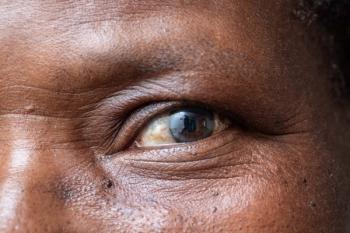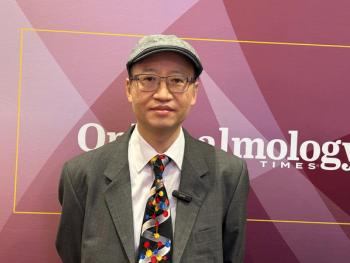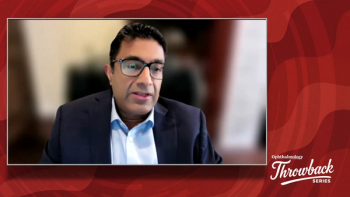
Better outcomes a day away
Laser refractive cataract surgery delivers improved results with easy learning curve
TAKE-HOME:
Laser refractive cataract surgery performed with a proprietary femtosecond laser (LensAR Laser System, LensAR):
• Involves a 1-day learning curve.
• Improves refractive predictability.
• Reduces usage of ultrasound energy.
• Minimizes endothelial cell loss.
By Cheryl Guttman Krader; Reviewed by Sunil Shah, MD
Birmingham, England-A 1-day learning curve associated with a laser refractive cataract surgery system is producing superior outcomes.
Initial results from refractive cataract surgeries performed using a proprietary femtosecond laser (LensAR Laser System, LensAR) show the device is easy to use and provides outcomes superior to those achieved in procedures performed with conventional manual techniques, said Sunil Shah, MD.
“There is a minimal, 1-day learning curve for mastering laser refractive cataract surgery using this femtosecond laser, and its use provides benefits to patients,” said Dr. Shah, consultant ophthalmologist, Midland Eye, Birmingham, England. “Outcomes analyses show laser refractive cataract surgery delivers better refractive results, and the procedure seems to be better for the eye.”
Dr. Shah presented data from a total of 136 cases performed in two centers (Asian Eye Institute, Makati, Philippines and Instituto de Ojos Sacro Cuore, Lima, Peru). The series included 68 “learning curve” cases, defined as those completed on a surgeon’s first day using the femtosecond laser.
Median procedure time for all cases performed in the Philippines single-surgeon series (Harvey Uy, MD) was 3 min 57 sec, and it was reduced to 3 min 25 sec excluding the learning curve cases. The Peru cohort included cases performed by Dr. Shah and several other surgeons (Frank Bucci Jr., MD, William Fishkind, MD, and R. Bruce Wallace Jr., MD). Median procedure time was 3 min 50 sec for all cases and 3 min 40 sec after excluding the learning curve eyes.
“Even on the first day, procedure times for laser refractive cataract surgery with this system are very fast,” Dr. Shah said.
Ease of opening capsulotomy
Surgeons were also asked to rate the ease of opening the capsulotomy. Using a scale of 1 to 10 where 10 was the best possible score (free-floating cap), 94% of cases received a rating of “10” and another 3% were rated as “9”.
Dr. Shah also presented data from a contralateral-controlled eye study performed Dr. Uy that support better refractive predictability in cases performed using the femtosecond laser. Analyses of spherical equivalent outcomes at 6 months showed mean deviation from target was –0.21 D in eyes undergoing the femtosecond laser procedure versus 0.55 D when conventional surgery was performed.
“Although the difference is small, it is highly statistically significant,” Dr. Shah said.
Furthermore, the achieved refractive outcome exactly matched the target in 11.6% of eyes treated with femtosecond laser and was within 0.25 D in 47.4%. However, only 1.4% of eyes operated on with a manual technique had a refractive outcome that was right on target and only 22% were within 0.25 D.
Phaco energy usage was analyzed with eyes subdivided by cataract grade. Not surprisingly, the data were similar for the two procedures among eyes with a grade 1 cataract. However, use of the femtosecond laser reduced phaco energy by 79% in eyes with grade 2 cataract, by 67% in those with a grade 3 cataract, and by 56% in the grade 4 subgroup compared with the contralateral eye operated on with manual phaco.
“These data, some of which have been previously published, are very compelling,” Dr. Shah said.
Analyses of endothelial cell count changes with eyes stratified by cataract grade showed a loss of about 4% to 5% after manual surgery in all subgroups, which is consistent with previously reported data from eyes undergoing routine phacoemulsification. However, mean endothelial cell loss rates were only 1% to 1.9% when the femtosecond laser was used in the same contralateral eye study.
“The femtosecond laser procedure appears to increase safety for all eyes and would be particularly indicated for those with Fuchs’ dystrophy, post-corneal transplant, and in denser cataracts,” Dr. Shah said.
Fyi
Sunil Shah, MD
Dr. Shah is a consultant to Topcon Europe that distributes the LensAR laser in Europe. Dr. Uy and Dr. Bucci are consultants for LensAR. This article is based on Dr. Shah’s presentation at the 2012 annual meeting of the American Academy of Ophthalmology.
Newsletter
Don’t miss out—get Ophthalmology Times updates on the latest clinical advancements and expert interviews, straight to your inbox.



















































.png)


